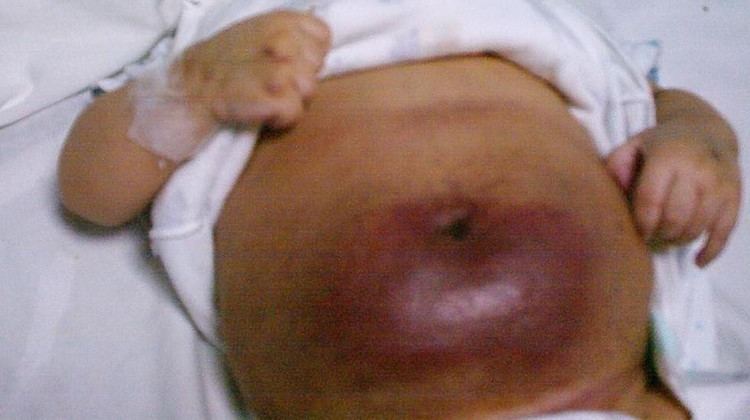Specialty hematology ICD-9-CM 287.39 DiseasesDB 30701 | ICD-10 D69.5 (ILDS D69.507) OMIM 141000 eMedicine med/1221 ped/1234 | |
 | ||
Kasabach–Merritt syndrome (KMS), also known as Hemangioma with thrombocytopenia is a rare disease, usually of infants, in which a vascular tumor leads to decreased platelet counts and sometimes other bleeding problems, which can be life-threatening. It is also known as hemangioma thrombocytopenia syndrome. It is named after Haig Haigouni Kasabach and Katharine Krom Merritt, the two pediatricians who first described the condition in 1940.
Contents
Pathophysiology
KMS is usually caused by a hemangioendothelioma or other vascular tumor, often present at birth. Although these tumors are relatively common, it is rare for them to cause KMS.
When these tumors are large or are growing rapidly, sometimes they can trap platelets, causing severe thrombocytopenia. The combination of vascular tumor and consumptive thrombocytopenia defines KMS. Tumors can be found in the trunk, upper and lower extremities, retroperitoneum, and in the cervical and facial areas.
This consumptive coagulopathy also uses up clotting factors, such as fibrinogen which may worsen bleeding. The coagulopathy can progress to disseminated intravascular coagulation and even death.
Hemolytic anemia secondary to microangiopathic destruction (physical damage) of the RBCs can be expressed as mild, moderate, or severe.
Diagnostic workup
The diagnostic workup is directed by the presenting signs and symptoms, and can involve:
Patients uniformly show severe thrombocytopenia, low fibrinogen levels, high fibrin degradation products (due to fibrinolysis), and microangiopathic hemolysis.
Management
Management of KMS, particularly in severe cases, can be complex and require the joint effort of multiple subspecialists. This is a rare disease with no consensus treatment guidelines or large randomized controlled trials to guide therapy.
Supportive care
Patient with KMS can be extremely ill and may need intensive care. They are at risk of bleeding complications including intracranial hemorrhage. The thrombocytopenia and coagulopathy are managed with platelet transfusions and fresh frozen plasma, although caution is needed due to the risk of fluid overload and heart failure from multiple transfusions. The possibility of disseminated intravascular coagulation, a dangerous and difficult-to-manage condition, is concerning. Anticoagulant and antiplatelet medications can be used after careful assessment of the risks and benefits.
Definitive treatment
Generally, treatment of the underlying vascular tumor results in resolution of KMS. If complete surgical resection is feasible, it provides a good opportunity for cure (although it can be dangerous to operate on a vascular tumor in a patient prone to bleeding, even with appropriate surgical subspecialists involved).
If surgery is not possible, various other techniques can be used to control the tumor:
Outcomes
KMS has a mortality rate of about 30%. For patients that survive the acute disease, supportive care may be required through a gradual recovery.
Furthermore, patients may need care from a dermatologist or plastic surgeon for residual cosmetic lesions. On long-term followup, most patients have skin discoloration and/or mild disfiguration from the dormant tumor.
